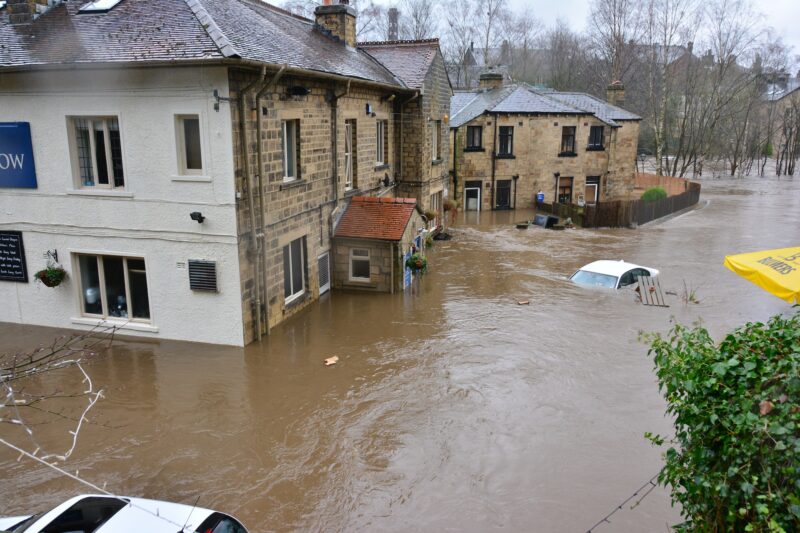A flood risk assessment sounds simple, right? You analyse the area for flood risks and find solutions to prevent it. Well, that’s part of it, but it’s more than a simple find-and-prevent task. For example, did you know you’ll need a specialist to carry out the assessment depending on the project? If not, then read on to find out more about flood risk assessments and the requirements surrounding them.
For full flood-related information and guidance, please visit the government’s official flood risk and coast change site.
Table of contents
- What is a flood risk assessment?
- When is a flood risk assessment required?
- When is a flood risk assessment not required?
- What is the standing advice for a flood risk assessment?
What is a flood risk assessment?
Let’s get this question out of the way. If you’re already familiar with the concept of a flood risk assessment, it never hurts to have a reminder. So, let’s break it down.
A flood risk assessment (also known as an ‘FRA’) is a process to check whether the site you want to develop is at risk. The earlier one is carried out, the less likely you’ll have to deal with excessive additional costs (e.g. flood damage repairs) since you’ll have more measures in place to prevent this.
Who is the flood risk assessment for?
Anyone who is a planning applicant. Although not always required, you’re more than likely required to carry one out for the proposed development site.
How do I get a flood risk assessment?
Flood risk assessment consultants are the go-to for this evaluation. With that said, if the development is low risk, the assessment is occasionally possible as a DIY project.
It’s always better to be safe than sorry. So, if you’re unsure whether you can carry out the assessment, contact the Environment Agency to check your circumstances.

It’s also worth noting local planning authorities can refuse a planning application if it does not have a flood risk assessment or the assessment is unsatisfactory.
Now, onto the big questions. Here we go!
When is a flood risk assessment required?
Flood risk assessments are required when developments (including change of use) are in a flood zone. You can find out what flood zone you are in via the government website’s flood information for planning in England.
These flood zones include 1, 2 and 3. An additional zone (part of zone 1) includes where critical drainage problems are apparent.
If you’re in flood zones 2 and 3
Developments (minor or change of use) occurring in these zones require a flood risk assessment. Before that, you must carry out a sequential test. This sequential test compares the proposed site with other available sites, helping to identify which has the lowest flood risk.
If the results of a sequential test find no other sites suitable for the development, an exception test is the next point of call in most cases. This test will show how to manage flood risk on and off the proposed site.
Exception tests are required if the development is in one of the following situations or sub-zones:
- Highly vulnerable and in flood zone 2.
- Essential infrastructure in flood zone 3a or 3b.
- More vulnerable in flood zone 3a.

If you’re in flood zones 1 and critical drainage areas
Developments (more than 1 hectare or where critical drainage problems are notified by the Environment Agency) occurring in this zone require a flood risk assessment.
An FRA is also required if the development is at risk of flood from other sources, like surface water drains. Including change of use to existing development that increases its vulnerability to flooding.
If you’re unsure whether your development will be affected by other flooding sources, speak with your lead local flood authority (i.e., council) for clarification.
When is a flood risk assessment not required?
A flood risk assessment is not required when the development is less than 1 ha in flood zone 1 – however, if the development is at risk of flooding by sources (other than rivers and the sea) like surface water drains, you will require a flood risk assessment.
What is the standing advice for a flood risk assessment?
Standing advice is specified via preparing for a flood risk assessment from the government website. You will need as much information as possible to ensure the FRA is thorough enough for suitable evaluation.
So, you’ve got all your preparations in place, but what happens when it does flood, or something goes wrong with your drainage systems? Like a flooded kitchen or burst pipe? Well, our flood hub has information to help you know your next steps for dealing with these issues and more. Don’t wait to check them out.











